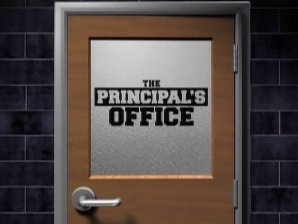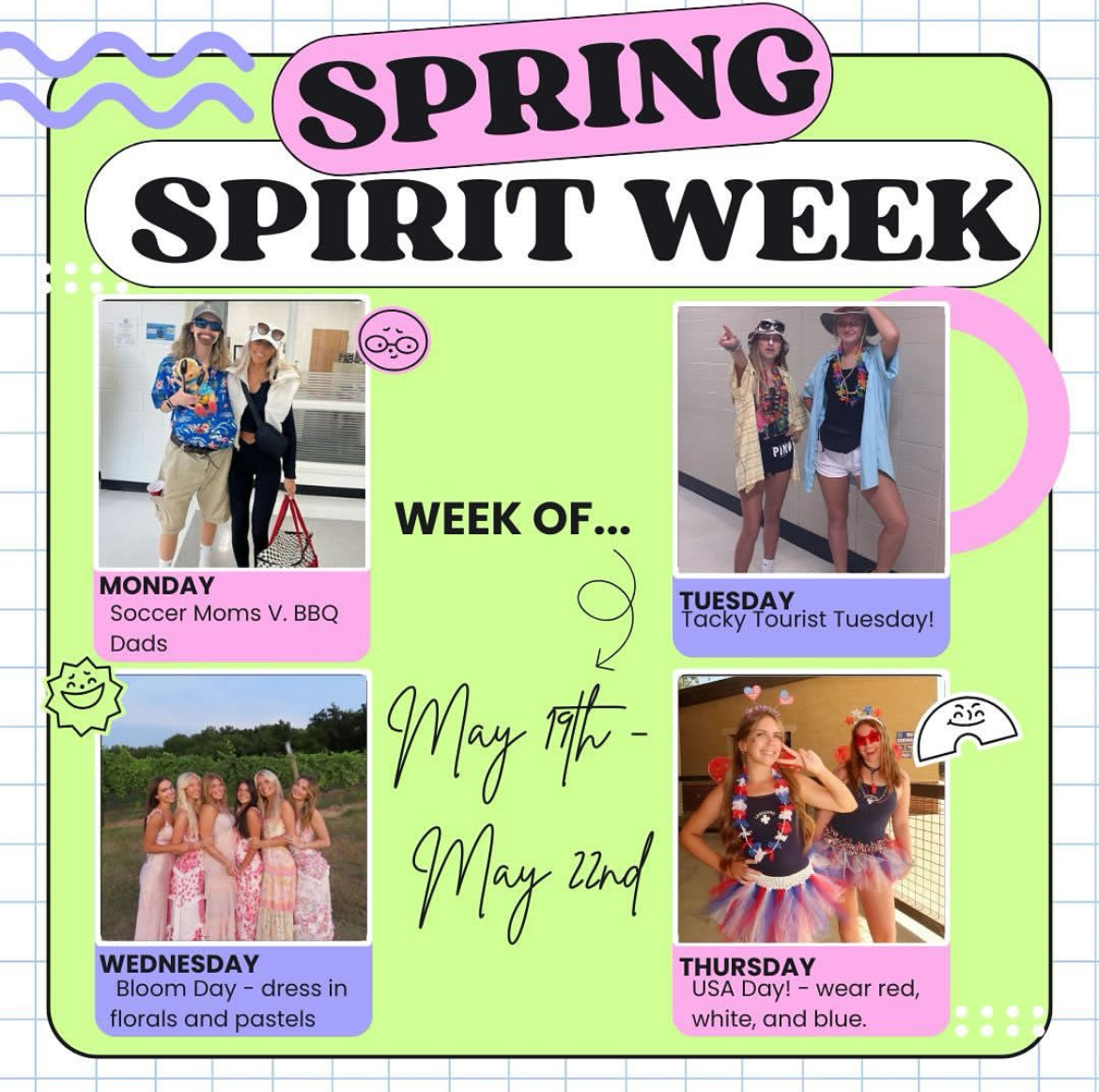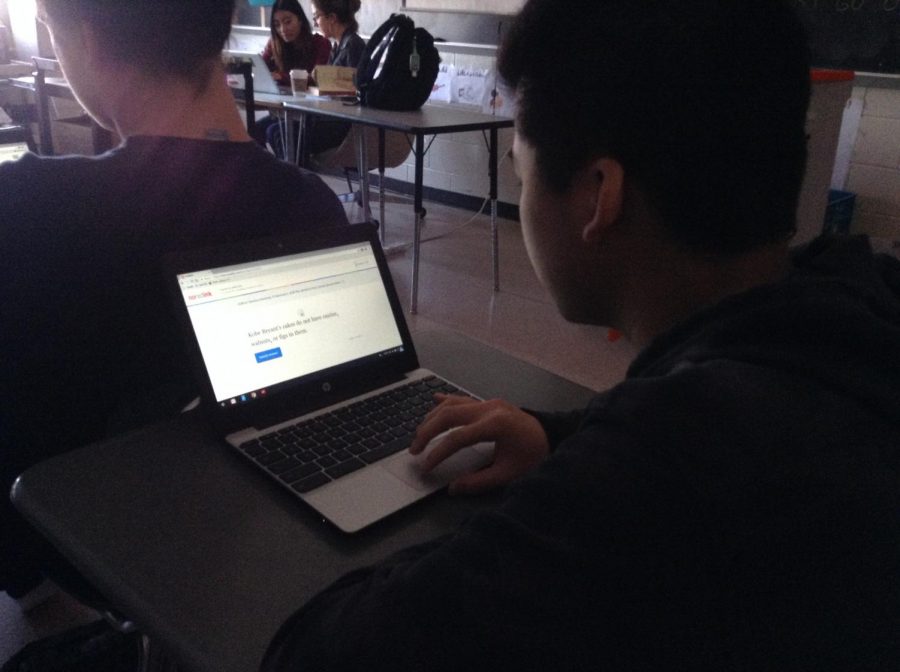Teachers using more apps to aid student learning
Membean? Commonlit? Khan? Which apps are you using?
Junior David Wang works on his assigned NoRedInk assignment
December 14, 2017
As the years have progressed, technology has become a large part of people’s lives throughout the nation and in DHS.
Educational apps and websites such as Khan Academy, Membean, Geogebra, NoRedInk, Google Classroom, Kahoot, and many more have become very popular teaching tools for DHS faculty members.
Students can see that Google resources and educational apps are aiding in the school’s way of educating students. Google’s apps such as Docs and Classroom have become essential in how students complete and turn in their work, it’s common to hear teachers telling their students to look at Classroom to receive and do their work.
According to the New York Times, nationally, “more than 30 million children use Google education apps like Gmail and Docs.”
But, the use of Google just scrapes the surface of what websites and apps DHS students use to learn and teachers use to educate.
Kahoot is one of the websites teachers use to engage students while learning. Kahoot lets teachers create multiple choice quizzes to check on learning. From these quizzes, students compete with each other to achieve first place by answering various questions correctly.
Social studies teacher Jose Machado uses Kahoot to have students review for tests. “Kahoot is an easy-to-use program in which students seem to really enjoy interacting with in class,” said Machado.
Machado also uses Kahoot as a way for students to win extra credit for their tests. These points are only given to the team of students that earns first place. This causes a competitive environment, which Machado said is a good motivator.
”Competition from these games motivates students to study more prior to playing Kahoot and before a test,” said Machado.
Math teacher Dane Reese uses the widely known Khan Academy in his classroom. Khan Academy allows students to learn about various subjects such as math, through videos and other means. Khan Academy has become “an incredibly valuable tool for human learning and knowledge,” Reese said.
Another math teacher, Todd Harris, has been using the mobile app known as Desmos in class. Desmos allows students to have access to a virtual graphing calculator.
“We use Desmos as a substitute for a graphing calculator that you would hold in your hand,” Harris said.“Many students can’t afford a new calculator, so Desmos helps the students without the expense.”
As Danbury High is a school of many backgrounds in a district with limited resources, money can be hard to come by for some students, making this app particularly useful.
Harris comments on how great Desmos is. The use of technology causes students to become more interactive with the subjects they are learning.
English teacher Christina Taylor-Riendeau uses Membean and NoRedInk as ways of learning when students are out of school. These websites improve her student’s vocabulary and grammar through study tools on the site, without taking away vital class time.
Taylor-Riendeau requires students go on Membean for 15 minutes, three days a week. On the subject of this, Taylor-Riendeau said, “When you do vocabulary in shorter periods of time you actually retain it longer.”
Not only do the sites help vocabulary, they also assist in the student’s future. Taylor-Riendeau said, “It helps you with your SATs, it helps you with any timed writing that you have to do, and it’s going to help you when you go to college to become a more competitive college candidate.”
Today, admittance into a college has become much more competitive and with the help of online programs, it improves students to become better college candidates that their select colleges will want.
Jonathan Ayala, junior, is in favor of the use of technology as a way of studying and learning. “They help me out in learning. It’s not too much work in my opinion and I feel like Membean does help me out with vocabulary in English class.”
Kimberly Rosado, sophomore, also supports using the technology. “Programs and websites in school give us a chance to get extra help when we can’t talk to a teacher after school,” said Rosado.
On a different note, Victor Martinez, junior, believes that the websites are time consuming and constricting for students when it becomes part of a student’s homework. “Most of the time it’s a hassle because people forget to do them, even if it’s just for 15 minutes a day,” Martinez said, referencing Membean. “Sometimes it causes complications because you forget about it and do it last minute.”
Taylor-Riendeau also mentions this as a downside of website and app usage in school. “Students look at it as an online thing; it’s not a handwritten homework so a lot of times it’s forgotten about.”
In addition to this, Taylor-Riendeau said that social media could be a distraction for students when completing work online.
Harris agrees that other online distractions is an issue with these sites. “There’s a difficulty in keeping kids focused on the task at hand. If they’re working on Desmos I need them on Desmos and not playing Angry Birds and texting their friends,” he said.
As the world continues to improve and create better learning programs, “it is critically important that DHS keep pace with the growth of online learning,” said Reese.
Harris added, “There’s a need for [technology] because that’s how the world is today.”





















Lil broccoli head • Dec 15, 2017 at 1:31 pm
Brilliant article Jerick. Very insightful into the use of technology in a studentś everday life. Very enjoyable read <3
Anonymous • Dec 15, 2017 at 11:25 am
WOW! I’ve learned more from this article than any of my teachers. This is fabulous and well put together. Great Job to Jerick for his commitment in producing such a great article for all of us. ESKETIT <3 O.O 🙂
Jerick is GOAT • Dec 15, 2017 at 7:54 am
Encore,ENCORE! Are you pulling my leg or did this boy just drop one of the better articles this already extraordinary year has blessed us with. Someday there will be headlines that will say
“Young boy who originated from Guatemala wins Best Article of the year”. Mock my words